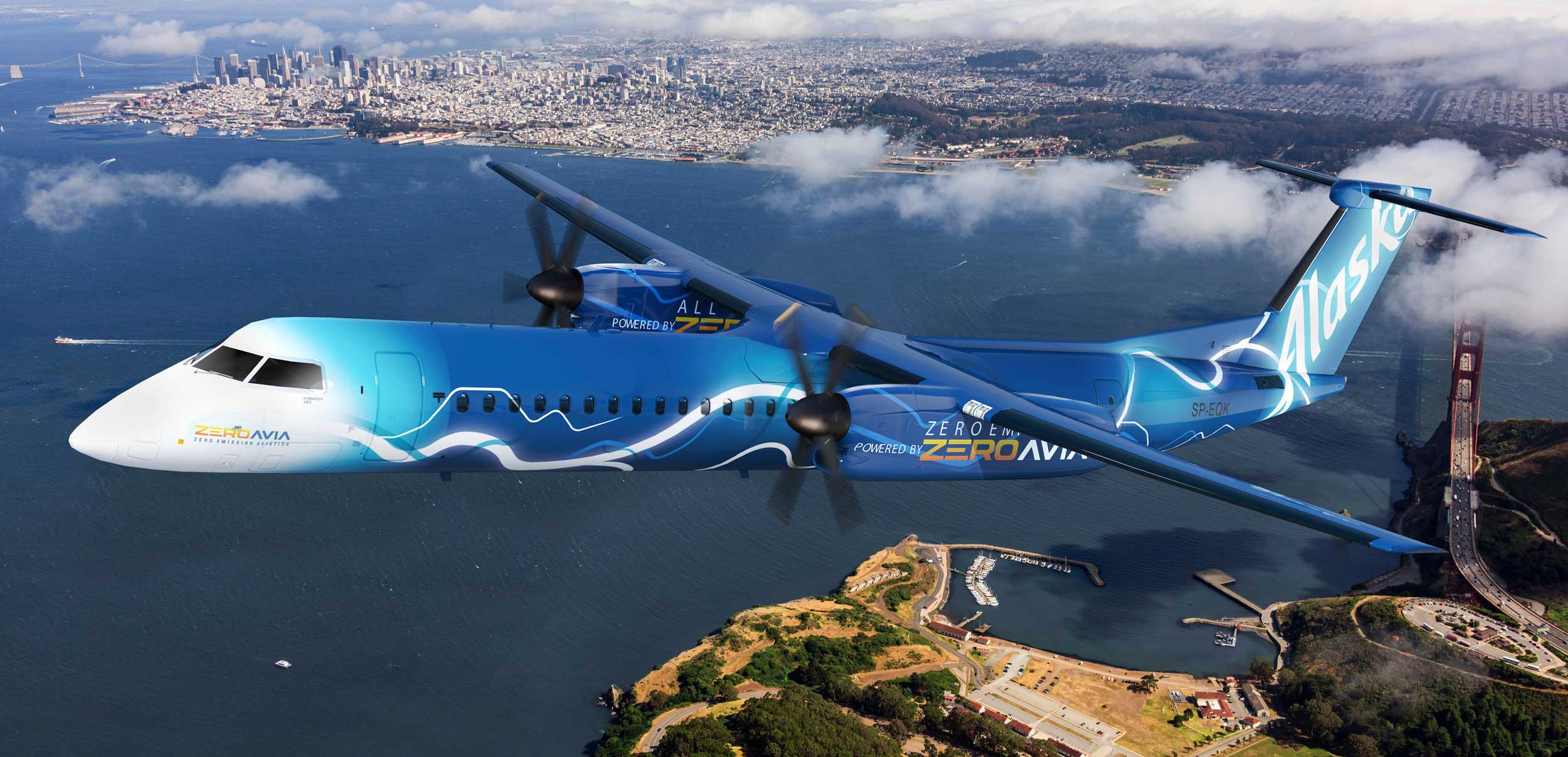 Alaska Airlines has teamed up with UK company ZeroAvia to develop hydrogen-electric propulsion for a 76-seat regional airliner.
Alaska Airlines has teamed up with UK company ZeroAvia to develop hydrogen-electric propulsion for a 76-seat regional airliner.
The De Havilland DHC-8-400 (also known as the Q400) will use ZeroAvia’s biggest powertrain platform capable of producing between 2,000kW and 5,000kW and have a range of more than 500nm.
Alaska is also joining a list of investors in ZeroAvia that includes the Seattle-based Amazon Climate Pledge Fund and Bill Gates’s Breakthrough Energy Ventures.
Diana Birkett Rakow, vice president of public affairs and sustainability for Alaska Airlines, said, “Alaska is committed to creating a sustainable future for aviation, working on all aspects of a five-part path toward our goal of net zero by 2040.
Alaska and ZeroAvia engineers will work together to scale the company’s existing powertrain platform to produce the ZA2000, an engine family capable of producing between 2,000 and 5,000 kilowatts of power with a 500-mile range.
The partnership will initially deploy ZeroAvia’s hydrogen-electric propulsion technology into a full-size De Havilland Q400 aircraft.
ZeroAvia will also work closely with aircraft regulators during this project to ensure the aircraft meets both safety and operational requirements. ZeroAvia will set up a location in the Seattle area to support this initiative.
Alaska has also secured options for up to 50 kits to begin converting its regional aircraft to hydrogen-electric power through ZeroAvia’s zero-emission powertrain, starting with the Q400 aircraft.
“The aviation industry is one of the hardest industries to decarbonise,” said Val Miftakhov, CEO and founder of ZeroAvia.
“However, with this collaboration, we are one step closer to achieving our goal of making our skies emission-free.” ”
Recently, ZeroAvia also successfully ground-tested its 600kW powertrain capable of flying 10-20 seat aircraft for 500 miles. It is currently preparing a 19-seat aircraft for flight testing at Cotswold Airport in the UK and is moving to full-size prototype manufacturing of its 2,000 kW engine for demonstrations in 2022.
